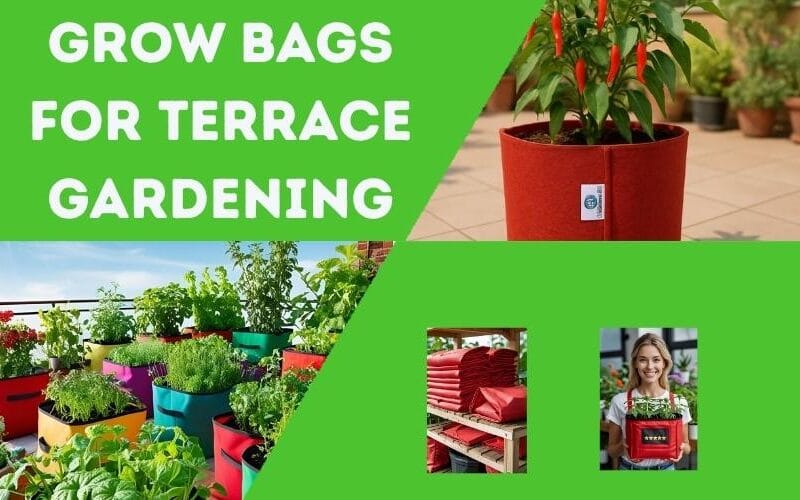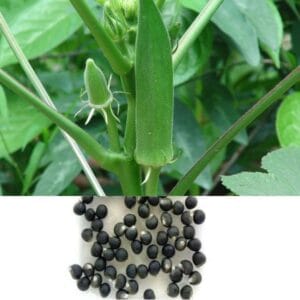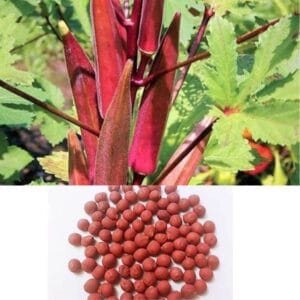Double Your Bael Fruit? The Amazing Kitchen Ingredient That Can Boost Your Harvest!
The Bael tree (Aegle marmelos), also known as Bilva, Stone Apple, or Bengal Quince, is a true gem for any garden space. Revered for its medicinal properties and uniquely aromatic fruit, cultivating a Bael tree is deeply rewarding. But what if your treasured tree isn’t producing the bounty you hoped for? Many factors influence fruiting, but a powerful solution might be sitting unused in your kitchen right now! If your goal is to significantly increase Bael fruit yield, you might be surprised that a common, natural byproduct, when used correctly, can make a remarkable difference. Many gardeners actively seek ways to improve their harvest, and this method is a time-tested secret.
Forget complex chemical fertilizers for a moment. We’re exploring a simple, traditional technique that provides key nutrients your Bael tree needs, potentially leading directly to a more abundant harvest. This guide won’t just reveal this “secret” ingredient; it will detail why it works for boosting production, how to apply it safely (this is vital!), and cover other essential practices necessary to increase Bael fruit yield, whether your tree is planted in the ground or flourishing in a modern grow bag. Getting more Bael fruits often comes down to understanding these specific needs.

Understanding Your Bael Tree (Aegle Marmelos) Needs for Better Yields
Before adding any amendments, grasping the fundamental needs of your Bael tree is crucial. Fulfilling these basic requirements is the foundation upon which any efforts to increase Bael fruit yield must be built.
Sunlight: Bael trees crave sun. A minimum of 6-8 hours of direct, unfiltered sunlight daily is essential for vigorous growth and, importantly, for triggering the flowering and fruiting process. Insufficient light is a common reason for poor yields.
Watering: Although known for drought tolerance once established, consistent moisture is vital, especially during key phases. Proper watering during flowering and fruit development is directly linked to achieving a good harvest and preventing fruit drop. However, they absolutely detest ‘wet feet’, making excellent drainage non-negotiable if you want to increase Bael fruit yield and avoid root diseases.
Climate: Native to subtropical and tropical regions, Bael trees thrive in warmth. They tolerate a range of temperatures but are vulnerable to frost, particularly young trees. Protecting them from cold snaps is important for survival and future fruiting potential.
Soil Requirements: The Foundation to Increase Bael Fruit Yield
Bael trees are adaptable, growing in various soil types from sandy to loamy or even clayey textures. However, to optimize growth and truly increase Bael fruit yield, specific soil conditions are preferred:
Excellent Drainage: This cannot be overstated. Poor drainage leads to waterlogging and root rot, quickly undermining the health of the tree and severely limiting fruit production. Sandy loam often provides the ideal balance of drainage and retention.
Suitable pH: Bael trees generally perform best in soils with a pH between 5.0 and 8.0 (slightly acidic to slightly alkaline). Knowing your soil’s pH is critical before adding amendments like wood ash, as the wrong pH can hinder nutrient uptake and negatively impact your efforts to increase Bael fruit yield.
Balanced Nutrients: All fruit trees require adequate nutrition. While Nitrogen (N) supports leafy growth, Potassium (K) and Phosphorus (P) are particularly critical for maximizing fruit production. Deficiencies here are often a direct cause of low yields, making targeted supplementation a key strategy to increase Bael fruit yield.
The “Secret” Kitchen Ingredient Revealed: Wood Ash!
Yes, the simple ash remaining after burning clean, untreated wood in your fireplace, stove, or outdoor fire pit is the ingredient holding potential! Gardeners have used wood ash for generations as a natural soil enhancer. Used responsibly, it can provide a significant nutrient boost specifically targeted towards improving fruit production in your Bael tree. This is a well-regarded traditional method many use to increase Bael fruit yield.
Why Wood Ash Helps Increase Bael Fruit Yield
Wood ash is far from inert; it’s a repository of minerals the original tree absorbed. Here’s why it’s particularly beneficial for boosting fruit harvests:
Rich Source of Potassium (K): This is the star component. Wood ash typically contains 5-10% or more potassium (mainly as potassium carbonate). Potassium is vital if you want to increase Bael fruit yield because it influences:
Flower and Fruit Formation: Essential for the processes leading to budding and successful fruit set. A lack of K often means fewer flowers and fruits.
Fruit Quality & Size: Adequate potassium contributes to larger, sweeter, and better-quality fruits.
Water Regulation & Stress Tolerance: Helps manage water use and improves overall plant resilience.
Overall Vigor: Strengthens the tree against pests and diseases, indirectly supporting better yields.
Provides Phosphorus (P): Though usually less abundant than potassium (1-3%), the phosphorus in wood ash is still valuable. Phosphorus contributes to:
Root Health: Strong roots anchor the tree and efficiently absorb water and nutrients needed for fruiting.
Energy Processes: Essential for photosynthesis and energy transfer within the plant.
Flowering Initiation: Plays a key role in signalling the start of the reproductive cycle. Getting enough P is part of the strategy to increase Bael fruit yield.
Contains Calcium (Ca) and Magnesium (Mg): These secondary macronutrients are also present. Calcium strengthens cell walls, and magnesium is vital for chlorophyll and photosynthesis.
Trace Elements: Supplies various micronutrients needed in small amounts for optimal plant function.
Raises Soil pH (Increases Alkalinity): The carbonate compounds in wood ash react with soil moisture, increasing the pH level. This liming effect can be beneficial if your soil is currently acidic, making locked-up nutrients available. However, this alkalinity is precisely why caution is paramount. Incorrect use can harm your tree and hinder your goal to increase Bael fruit yield.
How to Safely Use Wood Ash to Increase Bael Fruit Yield
Applying wood ash incorrectly is counterproductive. Its potent alkaline nature means too much can spike the soil pH excessively, causing nutrient deficiencies (lockout) or chemically burning delicate roots. Following best practices is essential to successfully increase Bael fruit yield using this method.
Important Precautions (Read Carefully!)
Source is Critical: ONLY use ash from burning clean, untreated, natural wood. Absolutely avoid ash from:
Charcoal briquettes (contain chemical binders, accelerants).
Treated lumber (CCA, creosote, painted, stained – releases toxins).
Cardboard, glossy paper, trash (inks, plastics, chemicals).
Coal (high in sulfur and heavy metals). Using the wrong ash is dangerous and won’t help increase Bael fruit yield.
Test Your Soil pH First: This step is mandatory. Before applying wood ash, get a baseline reading of your soil’s pH using a home kit or lab test.
If your soil pH is already 7.0 (neutral) or higher (alkaline), adding wood ash is generally not advised or requires extreme caution and minimal amounts. Pushing the pH too high will work against your efforts to increase Bael fruit yield.
If your soil pH is below 6.5 (acidic), wood ash can be beneficial in moderation to raise the pH towards the optimal range for Bael nutrient uptake.
Moderation is Everything: Treat wood ash as a potent supplement, not a general soil conditioner. More is not better. Over-application is the most frequent mistake that prevents gardeners from seeing benefits.
Keep Away From Trunk: Never pile ash directly against the tree’s stem or trunk. Direct contact can cause burns.
Use Protective Gear: Wood ash is caustic (alkaline). Always wear gloves, eye protection, and a dust mask when handling it to prevent irritation.
👇 Explore more gardening tips in this post
Application Methods & Timing for Best Results
If your soil test confirms that a moderate pH increase is desirable for your Bael tree:
Recommended Amount: A cautious guideline for established, in-ground trees is 1-2 cups (approx. 0.5 – 1 lb or 0.2 – 0.45 kg) of sifted wood ash per mature tree, per year, spread thinly. Adjust downwards significantly for smaller or younger trees. Base the exact amount on your soil test results and the degree of pH adjustment needed. Starting low is always safer when aiming to increase Bael fruit yield.
Application Zone: Distribute the ash evenly over the soil surface beneath the tree’s drip line (the area under the furthest reach of the branches) and slightly beyond. This targets the zone with the highest concentration of feeder roots.
Incorporation: Gently rake or scratch the ash into the top 1-2 inches of soil. Avoid deep cultivation that could damage surface roots. Watering thoroughly after application helps dissolve the ash and begin its reaction in the soil.
Optimal Timing: The ideal time for application is generally late winter or very early spring, just before active growth resumes. This ensures the potassium and other nutrients are available as the tree enters its demanding flowering and fruiting period, maximizing the potential to increase Bael fruit yield. A very light secondary application post-harvest might be considered, but avoid applying during peak summer heat and drought.
Growing Bael in Containers: Adapting to Increase Bael Fruit Yield in Pots
Container cultivation of Bael trees is a great option, especially using grow bags or geofabric bags. These offer distinct advantages:
Superior Drainage: Essential for Bael, fabric pots allow excess water to drain freely, preventing root rot.
Excellent Aeration: Air circulation to the roots promotes a healthier root system and ‘air prunes’ roots, preventing circling.
Temperature Moderation: Offers some buffering against extreme soil temperatures compared to dark plastic pots.
Choose an appropriately sized grow bag (e.g., 15-25 gallons for a semi-mature tree) and use a premium, well-draining potting mix.
Using Wood Ash in Grow Bags & Geofabric Bags
Applying wood ash in containers requires extreme caution because the limited soil volume makes pH changes much more rapid and dramatic. Overdoing it here can quickly harm the tree.
Tiny Amounts: If adjusting pH in an acidic potting mix, use very small quantities. Thoroughly mix no more than 1-2 tablespoons of ash per 5 gallons of potting mix before planting.
Minimal Top Dressing: Alternatively, apply a barely visible dusting (less than a teaspoon for a 15-gallon pot) to the soil surface once a year at most, keeping it well away from the stem. Water in immediately. Monitoring container pH is even more critical.
Focus on Balance: Relying solely on wood ash in pots is unwise. Use a balanced, slow-release fertilizer designed for fruit trees as the primary nutrient source, following instructions precisely. Wood ash should only be a minor supplement if pH adjustment is truly needed for optimizing nutrient uptake and helping increase Bael fruit yield in a container setting.
Other Crucial Factors to Increase Bael Fruit Yield
While judicious wood ash use can contribute, it’s only one element. To truly maximize your harvest and consistently increase Bael fruit yield, integrate these practices:
Smart Pruning: Prune during dormancy (late winter/early spring) to:
Remove dead, damaged, or crossing limbs.
Improve light penetration and air circulation within the canopy (reduces disease).
Stimulate new growth, as Bael often fruits on the current season’s shoots. Proper pruning is key to encourage fruiting wood.
Consistent Watering Strategy: Particularly during flowering and fruit maturation, prevent drought stress. Deep, infrequent watering is generally best for established trees. Container plants need frequent monitoring. Consistent water helps increase Bael fruit yield and fruit size.
Pollination Considerations: Bael is typically self-fertile, but insect pollination can sometimes enhance fruit set and development. Promoting a pollinator-friendly garden environment is always beneficial.
Pest & Disease Vigilance: Healthy trees resist problems better. Regularly inspect for pests or diseases. Use organic controls like neem oil or insecticidal soap when necessary. Good air circulation helps prevent fungal issues, protecting your potential harvest.
Holistic Soil Health: Wood ash is a specific amendment, not a complete soil builder. Regularly top-dress with compost or aged manure around your Bael tree (in-ground or container). This improves soil structure, water retention, microbial life, and provides a broader range of nutrients slowly over time – fundamental for long-term tree health and the ability to increase Bael fruit yield.
Grow Bag
Conclusion: A Balanced Strategy to Increase Bael Fruit Yield
Wood ash, rich primarily in potassium, can be a valuable, natural tool in your quest to increase Bael fruit yield, especially if your soil tends towards acidity. However, its potent alkaline nature demands careful handling. Always test your soil pH before application, use wood ash sparingly, ensure it’s from a clean source, and avoid it altogether on alkaline soils. Remember its limitations, particularly in containers like grow bags.
Ultimately, achieving that desired bumper crop of Bael fruit requires a comprehensive approach. Combine the potential boost from correctly applied wood ash with optimal sunlight, consistent watering, strategic pruning, proactive pest management, and a continuous focus on building rich, healthy soil. By understanding and diligently meeting all your Bael tree’s needs, you significantly enhance your chances to increase Bael fruit yield and enjoy the rewards of its unique, beneficial fruits for many seasons. Happy gardening and good luck with boosting your Bael harvest!























Reviews
There are no reviews yet.